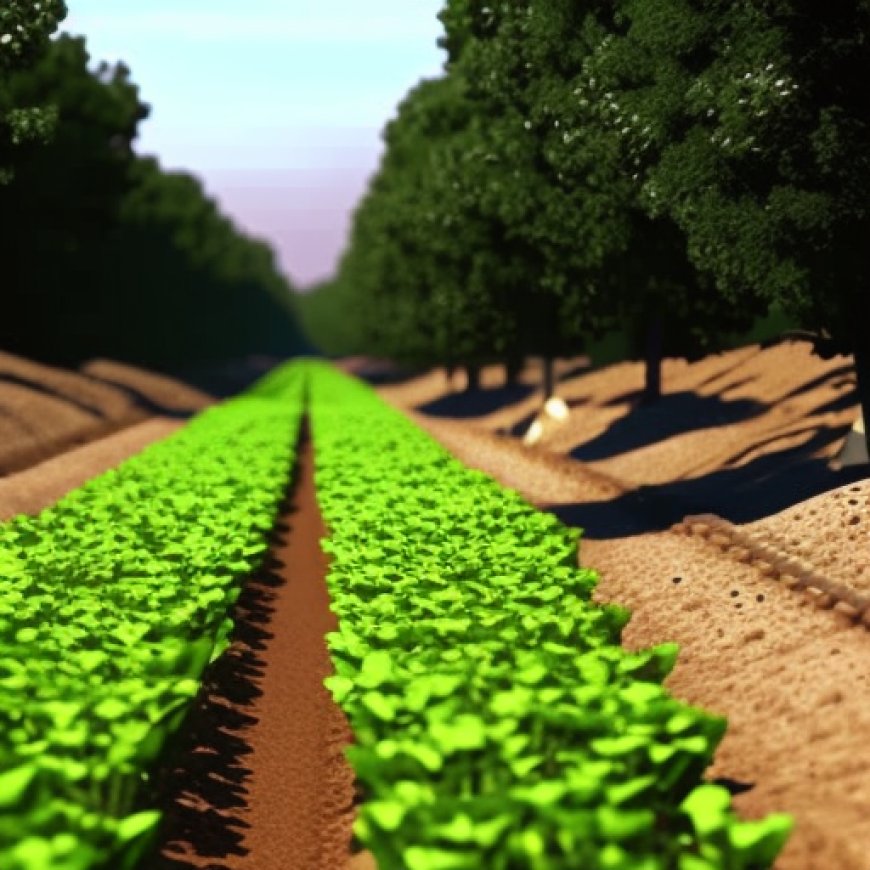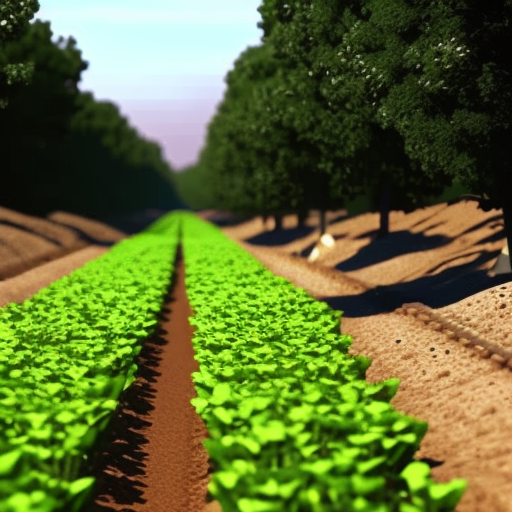New canal to boost agriculture in southeast – Türkiye News
New canal to boost agriculture in southeast Hurriyet Daily News


MARDİN

The Mardin-Ceylanpınar Irrigation Canal: Boosting Agriculture in Southeastern Türkiye
The new Mardin-Ceylanpınar Irrigation Canal, which carries water from the Atatürk Dam in Şanlıurfa to Mardin in southeastern Türkiye, has brought water to agricultural land equivalent to the size of 70,000 football fields.
Within the scope of the Southeastern Anatolian Project (GAP), a multi-sector integrated regional development project, the canal was completed and put into service.
With its 221-kilometer length, the “canal of abundance” will allow the region to harvest crops three times a year and boost farmers’ income.
Significance for Sustainable Development Goals (SDGs)
- SDG 2: Zero Hunger
- SDG 6: Clean Water and Sanitation
- SDG 8: Decent Work and Economic Growth
- SDG 12: Responsible Consumption and Production
- SDG 15: Life on Land
The Mardin-Ceylanpınar Irrigation Canal will supply water to 1 billion decares of land, meeting 35 percent of the country’s grain needs from this region.
The canal brings water from the Atatürk Dam, ensuring access to clean water for agricultural purposes.
The canal has the potential to generate employment for approximately 300,000 people, providing a source of livelihood and boosting economic growth in the region.
By expanding agricultural yields and diversifying products beyond grains, the canal promotes responsible consumption and production practices.
The project will contribute to the conservation of land resources by reducing excessive groundwater usage in the region.
Project Details
- The Mardin-Ceylanpınar Main Canal is the longest artificial river in Türkiye, with a length of 221 kilometers.
- The canal irrigates 70,000 football fields of agricultural land, and when all sections are completed, it will irrigate 349,000 football fields.
- The project cost 2 billion Turkish Liras ($36.8 million).
Expert Opinions
“It is a historical event that the water of the Euphrates [River] will meet the fertile lands of upper Mesopotamia,” said Dursun Yıldız, the head of the Water Policy Association.
Mehmet Şerif Öter, head of Kızıltepe Grain Trade Center, highlighted that the canal could generate employment for approximately 300,000 people and stated, “The canal will irrigate these lands, and these lands will feed the entire nation.”
“We currently harvest twice a year. With the canal, in some areas, three harvests could even be possible annually. The Mardin Plain currently meets 20 percent of the country’s wheat and legume needs. Once the canal is fully operational, the Mardin Plain will fulfill at least 35 percent of our country’s needs. If production thrives, external dependence will decrease,” added Öter.
SDGs, Targets, and Indicators
| SDGs | Targets | Indicators |
|---|---|---|
| SDG 2: Zero Hunger | Target 2.4: Sustainable food production systems | – Increase agricultural productivity and incomes of small-scale food producers, particularly women, indigenous peoples, family farmers, pastoralists, and fishers – Ensure sustainable food production systems and implement resilient agricultural practices that increase productivity and production, that help maintain ecosystems, that strengthen capacity for adaptation to climate change, extreme weather, drought, flooding, and other disasters, and that progressively improve land and soil quality |
| SDG 6: Clean Water and Sanitation | Target 6.4: Water use efficiency | – Increase water-use efficiency across all sectors and ensure sustainable withdrawals and supply of freshwater to address water scarcity and substantially reduce the number of people suffering from water scarcity |
| SDG 8: Decent Work and Economic Growth | Target 8.5: Full and productive employment and decent work for all | – By 2030, achieve full and productive employment and decent work for all women and men, including for young people and persons with disabilities, and equal pay for work of equal value |
| SDG 9: Industry, Innovation, and Infrastructure | Target 9.1: Develop quality, reliable, sustainable, and resilient infrastructure | – Develop quality, reliable, sustainable, and resilient infrastructure, including regional and transborder infrastructure, to support economic development and human well-being, with a focus on affordable and equitable access for all |
| SDG 12: Responsible Consumption and Production | Target 12.3: Sustainable food production and consumption | – By 2030, halve per capita global food waste at the retail and consumer levels and reduce food losses along production and supply chains, including post-harvest losses |
| SDG 13: Climate Action | Target 13.1: Strengthen resilience and adaptive capacity to climate-related hazards and natural disasters | – Strengthen resilience and adaptive capacity to climate-related hazards and natural disasters in all countries |
| SDG 15: Life on Land | Target 15.1: Sustainable land management | – By 2020, ensure the conservation, restoration, and sustainable use of terrestrial and inland freshwater ecosystems and their services, in particular forests, wetlands, mountains, and drylands, in line with obligations under international agreements |
1. Which SDGs are addressed or connected to the issues highlighted in the article?
- SDG 2: Zero Hunger
- SDG 6: Clean Water and Sanitation
- SDG 8: Decent Work and Economic Growth
- SDG 9: Industry, Innovation, and Infrastructure
- SDG 12: Responsible Consumption and Production
- SDG 13: Climate Action
- SDG 15: Life on Land
The issues highlighted in the article are related to agriculture, water supply, economic development, infrastructure, food production and consumption, climate resilience, and land management. These align with the mentioned SDGs.
2. What specific targets under those SDGs can be identified based on the article’s content?
- Target 2.4: Sustainable food production systems
- Target 6.4: Water use efficiency
- Target 8.5: Full and productive employment and decent work for all
- Target 9.1: Develop quality, reliable, sustainable, and resilient infrastructure
- Target 12.3: Sustainable food production and consumption
- Target 13.1: Strengthen resilience and adaptive capacity to climate-related hazards and natural disasters
- Target 15.1: Sustainable land management
The article mentions the achievement of sustainable food production systems, water use efficiency, employment generation, infrastructure development, sustainable food production and consumption practices, climate resilience, and sustainable land management.
3. Are there any indicators mentioned or implied in the article that can be used to measure progress towards the identified targets?
The article does not explicitly mention specific indicators to measure progress towards the identified targets. However, some indicators that can be implied based on the article’s content include:
- Increase in agricultural productivity and incomes of farmers
- Efficient use of water resources
- Employment generation in the agricultural sector
- Improvement in infrastructure for irrigation and water supply
- Reduction in food waste and losses
- Enhanced resilience to climate-related hazards and natural disasters
- Conservation and sustainable use of land and ecosystems
These indicators can be used to measure progress towards the identified targets.
4. SDGs, Targets, and Indicators
| SDGs | Targets | Indicators |
|---|---|---|
| SDG 2: Zero Hunger | Target 2.4: Sustainable food production systems | – Increase agricultural productivity and incomes of small-scale food producers, particularly women, indigenous peoples, family farmers, pastoralists, and fishers – Ensure sustainable food production systems and implement resilient agricultural practices that increase productivity and production, that help maintain ecosystems, that strengthen capacity for adaptation to climate change, extreme weather, drought, flooding, and other disasters, and that progressively improve land and soil quality |
| SDG 6: Clean Water and Sanitation | Target 6.4: Water use efficiency | – Increase water-use efficiency across all sectors and ensure sustainable withdrawals and supply of freshwater to address water scarcity and substantially reduce the number of people suffering from water scarcity |








